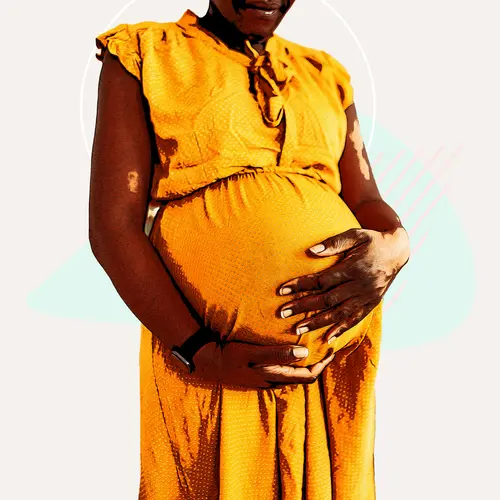In this birthing position, your baby's head is toward your cervix. Their face is toward your back and their back is toward your belly.
During pregnancy, your baby may move into different positions. Your baby usually moves into the birthing position sometime between weeks 32 and 36 of pregnancy.
Are There Benefits of the Occiput Anterior Position?
The occiput anterior position is considered to be one of the best fetal positions. It leads to the best birthing outcomes. With this position there are:
- Fewer unplanned cesarean sections (C-sections)
- On average, faster births
- On average, a less painful birthing process
This is because in the occiput anterior position your baby's head is in the optimal position to help your cervix open naturally. Their soft skull bones are also in the best position to change shape and fit more easily through the birth canal in this position.
Are There Variations of the Occiput Anterior Position?
Some babies are in the direct occiput anterior position, which means their nose is facing your tailbone. However, many babies are rotated slightly to one side. In the left occiput anterior position, your baby's head is slightly rotated toward the left. In the right occiput anterior position, it is slightly toward the right. All three of these positions are considered to be best for giving birth vaginally.
What Are Other Baby Positions in the Womb?
While the occiput anterior position is the most common birthing position, some babies do not descend into this position naturally. Other potential positions include:
Transverse. In this position, your baby's head directly faces either the left or right side of your vaginal canal. Many babies start out in this position during early labor, but then turn to the occiput anterior position as your labor goes on for longer. If they do not turn, your doctor may recommend a tool to help like forceps or a vacuum. In some cases, you might need a cesarean section.
The names for this position are left occiput transverse or right occiput transverse, depending on which direction your baby is facing.
Occiput posterior. This is when your baby's back is facing your back, and their face is toward your belly button. You can have a successful vaginal delivery in this position if you have a large pelvis. However, many babies will need to be helped along with forceps. Depending on the situation, your doctor may keep the baby in this position, or use the forceps to turn the baby into the occiput anterior position as it enters your vaginal canal. Because of this, many pregnant people have faster and less painful births with occiput anterior vs. posterior.
Your baby can be in direct occiput posterior, which is when they are directly facing your belly button. They can also be in right occiput posterior or left occiput posterior if their head is slightly rotated toward one side or the other.
Breech. If your baby is in a breech position, that means their bottom is down toward your cervix and their head is up toward your head.
Depending on how your baby is rotated, there are several more specific names for breech positions. These include:
- Sacrum anterior. Your baby's head is directly facing your back and their back is facing your belly.
- Left sacrum anterior and right sacrum anterior. The same as sacrum anterior, but slightly rotated to the left or right.
- Right sacrum transverse and left sacrum transverse. Your baby is directly facing the left or right.
- Sacrum posterior. Your baby is back to back with you.
- Left sacrum posterior and right sacrum posterior. The same as sacrum posterior, but slightly turned toward the left or right.
There are also different types of breech positions:
- Frank breech. In this position, your baby's rear end is the first thing that will come out. Their legs are bent up toward their abdomen and their feet are in front of their face.
- Complete breech. In this position, your baby's legs are bent at the knee so their feet are touching their rear end.
- Footling breech. In this position, one or both of your baby's feet will be the first to come out of the birth canal.
All breech positions come with a greater risk of injury during birth. One of the main risks is that the umbilical cord can form a loop around the baby's neck. With breech babies, there is room for the umbilical cord to enter the birth canal before the baby. It can then get folded, cutting off blood supply to the baby before it is born. Finally, because the head is the largest part of the body, it can get stuck during a vaginal birth.
If your baby is in a breech position, your doctor may recommend a cesarean section.
Can You Get Your Baby to Turn?
Many parents wonder if it's possible to encourage their baby to turn because they want to have an occiput anterior delivery. There are things you can try, but none of them are guaranteed to work. You can try spending some time on your hands and knees to encourage your baby to turn their face frontwards. Music, lights, and stimulation may attract your baby to turn toward them. There is also a medical procedure called an external cephalic version that may help your baby to turn from a breech position. However, even if your baby does turn temporarily, they may go back to their original position.

